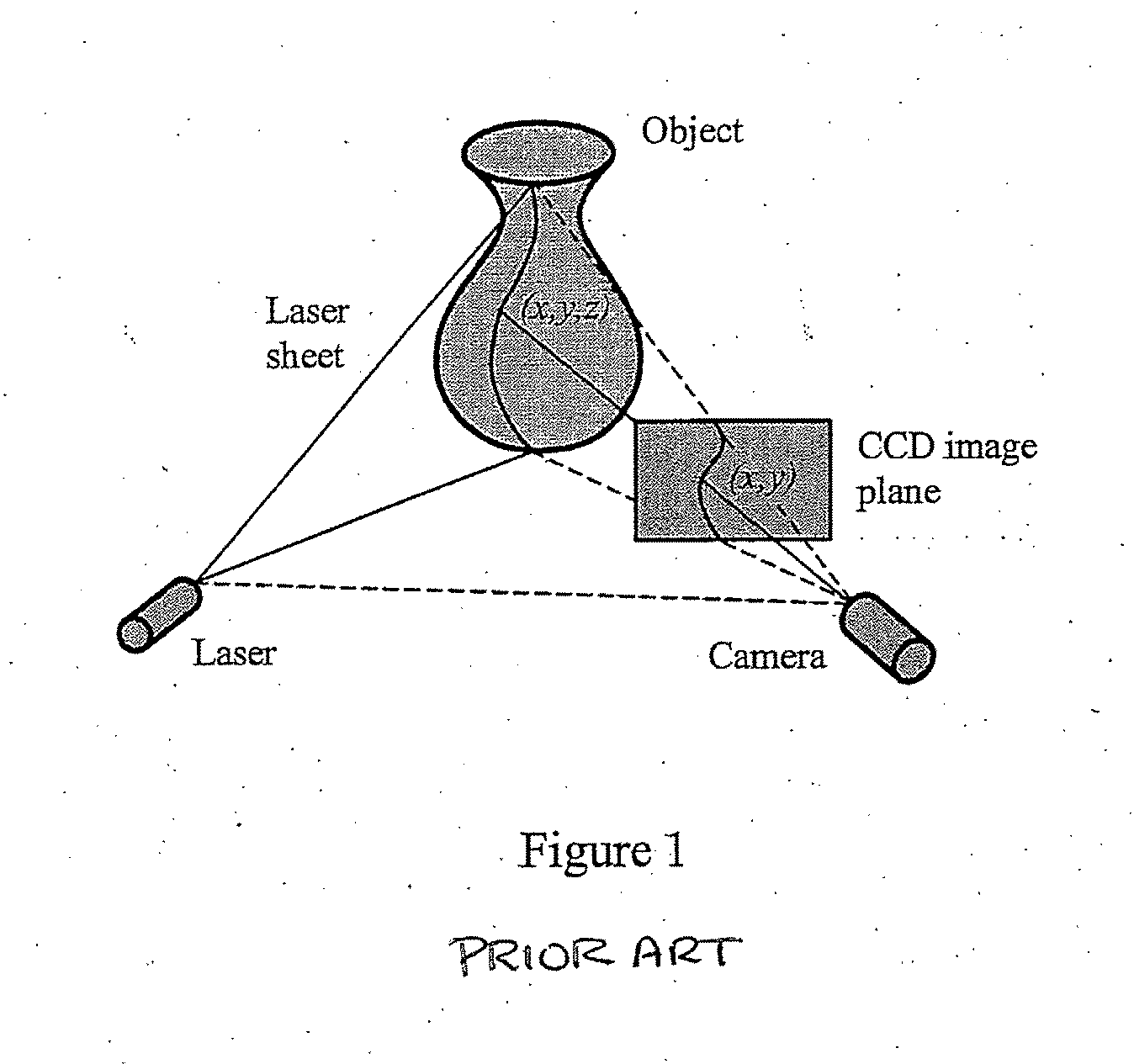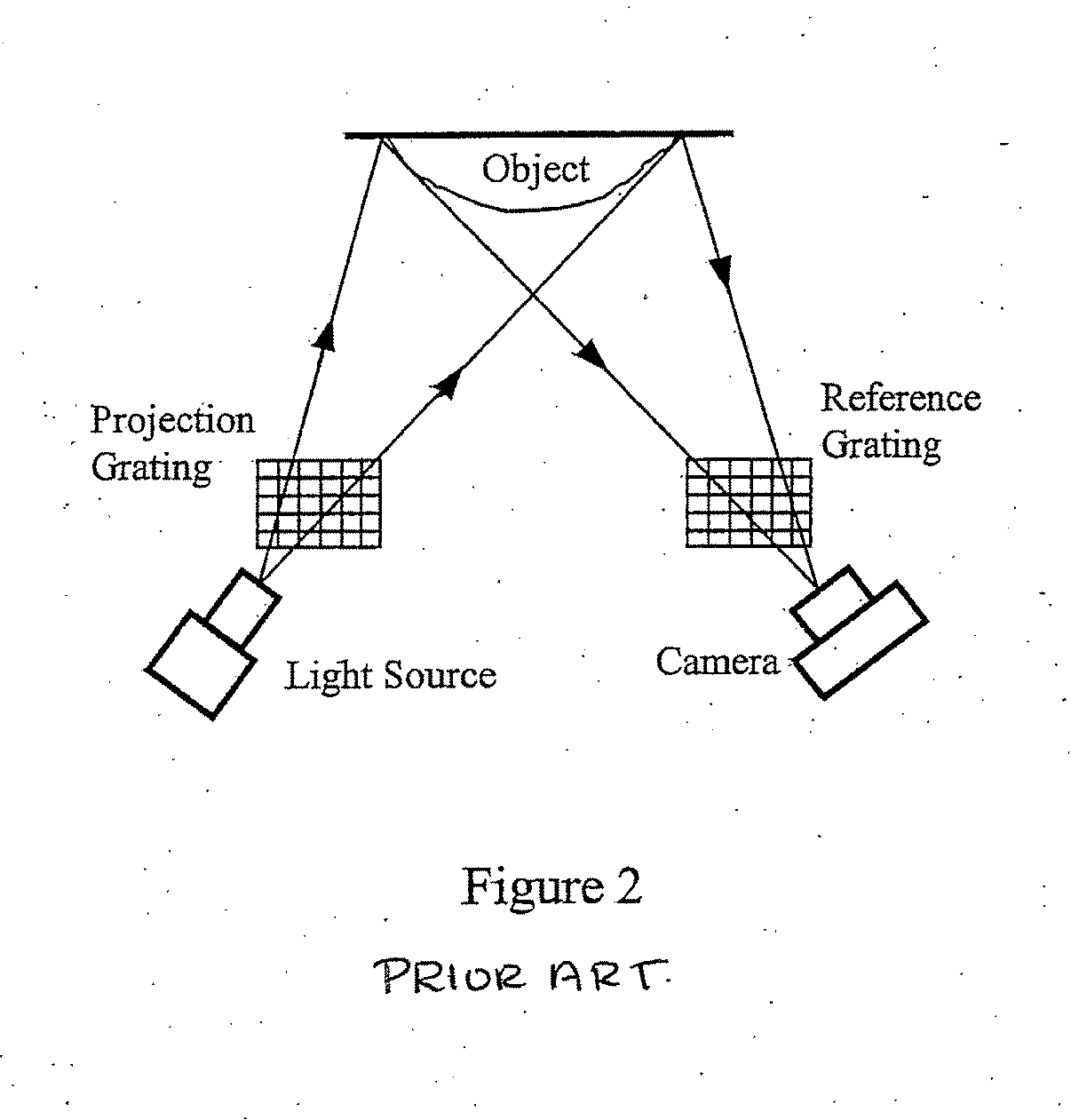Full-field three-dimensional measurement method
a three-dimensional measurement and full-field technology, applied in the direction of measuring devices, instruments, using optical means, etc., can solve the problems of poor accuracy, limited extraction phase accuracy, slow and unpractical real-time 3-d shape measurement, etc., to achieve simple computation, reduce the effect of processing speed and fewer images
- Summary
- Abstract
- Description
- Claims
- Application Information
AI Technical Summary
Benefits of technology
Problems solved by technology
Method used
Image
Examples
Embodiment Construction
[0072] The present invention will be described for the purposes of illustration only in connection with certain embodiments. However, it is to be understood that other objects and advantages of the present invention will be made apparent by the following description of the drawings according to the present invention. While a preferred embodiment is disclosed, this is not intended to be limiting. Rather, the general principles set forth herein are considered to be merely illustrative of the scope of the present invention and it is to be further understood that numerous changes may be made without straying from the scope of the present invention.
[0073] Referring now to FIG. 3, there is shown a simple schematic diagram of the inventive triangular phase-shifting fringe-projection measurement apparatus, shown generally at 30. It consists of a computer 31, a video projector 32, a CCD camera 33, and a flat reference plane 34 for calibration. The projector 32 is used to project a triangula...
PUM
 Login to View More
Login to View More Abstract
Description
Claims
Application Information
 Login to View More
Login to View More - R&D
- Intellectual Property
- Life Sciences
- Materials
- Tech Scout
- Unparalleled Data Quality
- Higher Quality Content
- 60% Fewer Hallucinations
Browse by: Latest US Patents, China's latest patents, Technical Efficacy Thesaurus, Application Domain, Technology Topic, Popular Technical Reports.
© 2025 PatSnap. All rights reserved.Legal|Privacy policy|Modern Slavery Act Transparency Statement|Sitemap|About US| Contact US: help@patsnap.com



